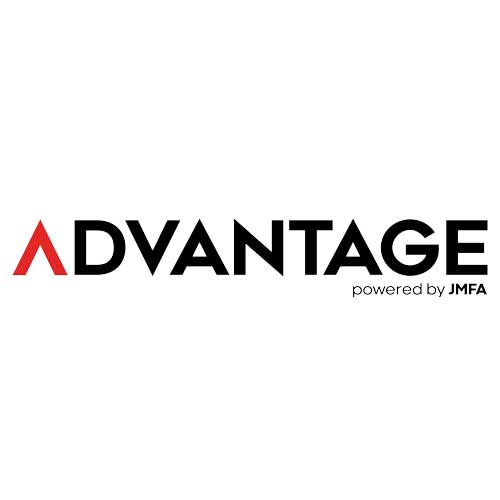As consumer expectations evolve and regulatory scrutiny intensifies, community banks must reassess their overdraft programs to remain competitive while ensuring they provide lasting value.
With 65% of consumers living paycheck to paycheck and nearly a quarter struggling to pay bills, overdraft services provide a vital safety net for many households. A well-structured overdraft program offers peace of mind, helping consumers cover essential expenses and maintain financial stability while also enabling financial institutions to generate responsible non-interest income. However, evolving regulations and increased scrutiny highlight the critical need for a proactive approach to compliance while ensuring services offer actual value.
Rather than viewing overdraft services as regulatory risk, forward-thinking banks see them as an opportunity — a way to strengthen consumer relationships, provide real value and drive sustainable growth. The key is aligning overdraft programs with transparency, compliance and customer needs while maintaining a responsible revenue model that supports long-term success.
The Changing Regulatory Landscape: What It Means for Overdraft Programs
Regulators have long focused on eliminating bad overdraft practices, but the last few years have brought an unprecedented push for change. The CFPB’s recent actions — including rules targeting large financial institutions and increased scrutiny of opt-in practices — are part of a broader effort to reshape overdraft services.
However, uncertainty remains. Legal challenges to new overdraft regulations continue, and enforcement priorities may shift depending on leadership changes. For community banks, this creates a challenging environment for planning ahead.
Those who take a proactive, consumer-focused approach will be in a stronger position, regardless of how the regulatory landscape shifts.
Why a Well-Designed Overdraft Program Drives Growth
Beyond compliance concerns, overdraft programs provide real financial value for many consumers. Studies consistently show that a significant portion of consumers rely on overdrafts as a short-term financial bridge. Offering transparent, reliable overdraft services supports customers, strengthens banking relationships and drives long-term engagement. It’s a great tool to help you achieve PFI status, too.
A strategic overdraft program can:
- Strengthen Consumer Trust and Retention: Clear disclosures and responsible program structures empower customers to make informed financial decisions.
- Support Financial Inclusion: Overdraft services provide a critical alternative to high-cost payday loans and other non-bank credit options.
- Generate Responsible Non-Interest Income: A well-managed program ensures revenue remains steady without putting excessive strain on consumers.
- Reduce Reputational and Regulatory Risk: Aligning overdraft practices with best-in-class compliance standards helps mitigate scrutiny and protects the institution.
Best Practices for Reliable and Consumer-Friendly Overdraft Program
Banks interested in creating sustainable non-interest income growth while offering consumer-friendly overdraft services should consider the following:
- Ensure Fair and Consistent Access to Overdraft Services: Consumers value stability. Rather than relying on fluctuating overdraft limits that change based on complex and unclear factors, it’s best to implement clear policies and tools to monitor and evaluate usage patterns. This allows for meaningful adjustments that protect both the bank and the consumer while ensuring a reliable safety net.
- Provide Clear, Transparent Disclosures: Transparency builds trust. Customers should fully understand overdraft terms, fees and all available alternatives to overdraft services that you provide. Prioritizing clear customer communication can reduce complaints, improve customer satisfaction and strengthen long-term relationships.
- Evaluate Fee Structures for Affordability and Fairness: Many banks are revisiting their overdraft fees to better align with customer needs. Implementing tiered fee structures or adjusting fees to reflect actual costs can help ensure sustainability while reducing financial strain on consumers.
- Offer Grace Periods and Other Consumer-Friendly Features: Providing a grace period before applying fees, allowing small overdrafts without penalty or giving customers time to cover negative balances can enhance the customer experience while still maintaining program viability.
- Strengthen Compliance and Record-Keeping: With increased scrutiny on opt-in practices, fee assessments and disclosure accuracy, maintaining strong documentation and internal controls is essential. Banks that proactively address compliance gaps, such as opt-ins, will be better positioned for regulatory changes.
- Educate and Engage Customers: Overdraft services should not be a mystery. Regular education — through online tools, statement inserts or branch conversations — empowers customers to make informed decisions. Educating consumers on overdraft options builds stronger relationships and reduces the risk of disputes.
Overdraft Strategy as a Competitive Advantage
For many consumers, financial shortfalls are a reality, making access to reliable overdraft services more critical than ever. Banks that provide a transparent, responsible overdraft solution strengthen trust and long-term relationships — which leads to growth.
Once viewed primarily as a back-end function, overdraft services have evolved from reactive to a strategic component of modern banking. Community banks that embrace a consumer-first approach, align their programs with compliance best practices, and continuously monitor their revenue models will be the ones that thrive in the years ahead.
A well-executed overdraft strategy goes beyond compliance — it strengthens customer relationships, fosters trust and drives sustainable growth. Now is the time for banks to reevaluate their programs to ensure they deliver value, align with evolving expectations and position themselves for long-term success.
Visit advantage-fi.com to learn more about a pro-consumer review of your overdraft program.
About John Cohron
John Cohron is the chief executive officer of ADVANTAGE. With over 20 years of experience in consulting operations and technology development, he is a forward-thinking leader committed to helping community banks navigate industry challenges, optimize overdraft programs, enhance transparency and protect non-interest income.
About ADVANTAGE
ADVANTAGE is a trusted provider of overdraft consulting, partnering with community banks to implement consumer-first strategies that align with best practices, regulatory expectations and long-term growth objectives.








